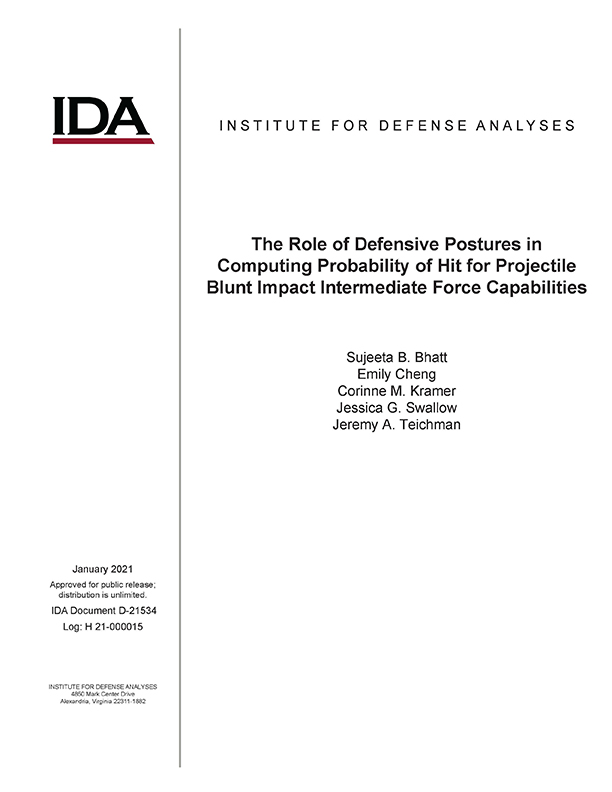The Role of Defensive Postures in Computing Probability of Hit for Projectile Blunt Impact Intermediate Force Capabilities
January, 2021
IDA document: D-21534
FFRDC: Systems and Analyses Center
Type: Documents
Division: Science and Technology Division,
Science, Systems and Sustainment Division
,
Strategy, Forces and Resources Division
Authors:
IDA document: D-21534
FFRDC: Systems and Analyses Center
Type: Documents
Division: Science and Technology Division
Authors:
Authors
Bhatt, Sujeeta B.; Cheng, Emily ; Kramer, Corinne M.; Swallow, Jessica G.; Teichman, Jeremy A.
See more authors

